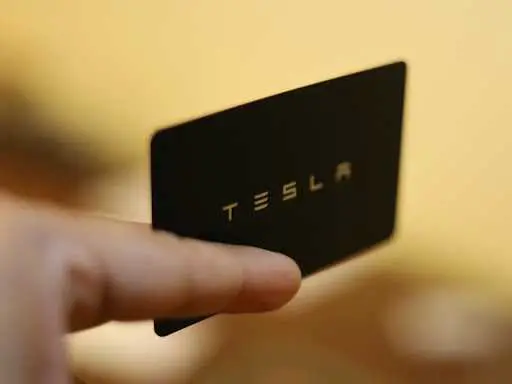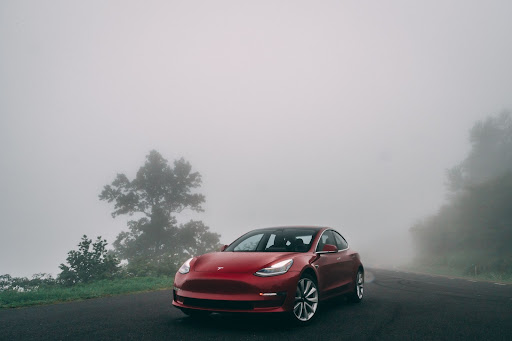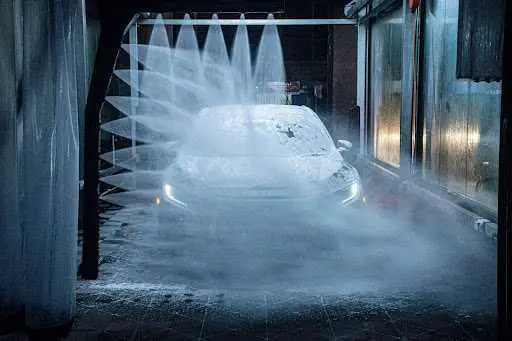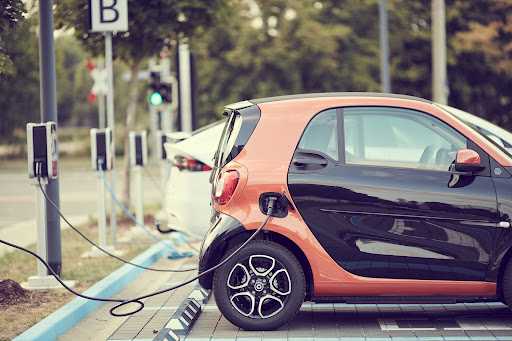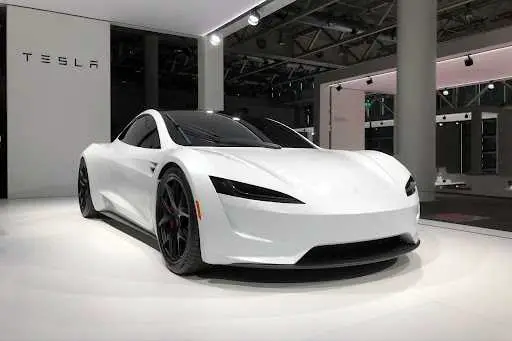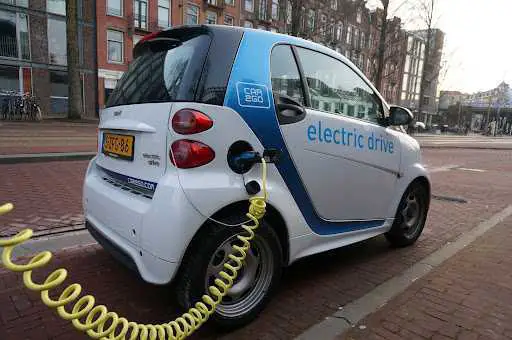How Does a Tesla Drive In Heavy Rain?
Driving an electric car can be a satisfying experience, even more so if it’s a futuristic car like Tesla. However, since these cars are relatively new, people may not know everything about handling them in extreme conditions. For example, you may wonder if you can drive your Tesla in the rain and how it drives in heavy rain.
Tesla cars drive beautifully and smoothly in heavy rain. They drive elegantly during rain without slipping or spinning thanks to their deep-tread tires, 4-wheel-drive and all-wheel-drive drivetrains, and heavy weights. In addition, their motors are perfectly sealed, so water never gets in.
Read on to learn more about the features that make driving Tesla cars safe in heavy rains. I’ll also talk about charging options and safety precautions while it’s raining.
Features that Make Teslas Safe in the Rain
Driving a Tesla in a downpour is safe and hassle-free because of its superior design and features. Here are the main ones:
Large and Deep-tread Tires
One of the most important things determining how gracefully a car, electric or otherwise, can navigate rain is its tires. The best tire for heavy rain features deep treads that maximize contact with the road by moving water away.
Tesla tires are different from regular car tires because of their higher quality materials, thicker sidewalls, and synthetic rubber. Customers are particularly happy with the deep treads on Tesla tires that are crucial in rainy conditions. These tires are designed to tolerate the high power placed on tires during acceleration because electric cars can have all their torque available.
In addition, since Tesla cars are heavier than regular vehicles, they need larger tires to tolerate this weight. As a result, they have a higher grip, making them ideal for rainy weather.
Drivetrain
Cars can be 2-wheel drive, 4-wheel drive, and all-wheel drive. 2WD cars aren’t ideal for rainy conditions since the engine sends torque and power to only two wheels, either front or back. This way, only one pair of wheels can have traction and grip in slippery conditions.
In 4WD and AWD, all wheels receive power from the motor. They’re different in that a 4-wheel-drive system isn’t always on, and you can only use it on rough roads and rainy conditions. That’s because the drivetrain isn’t designed for dry roads and doesn’t respond well in normal conditions. On the other hand, all-wheel-drive is always on and can adapt to different road conditions to send power to the wheels.
All models of Tesla vehicles come with 4WD or AWD drivetrains. These configurations give you better control over your vehicle in slippery conditions. Since both axles and all wheels receive power from the engine, you can get higher chances of getting wheel traction.
This way, if one wheel loses traction (the friction between the road and the wheel), there’s a higher chance that the other wheel grips to the road surface and helps you maintain control.
The models with AWD (such as Model Y and Model S) feature two electric motors that send torque to all wheels, giving an even higher control due to better traction and stability.
Torque Vectoring
Torque vectoring is a feature that helps vehicles maintain stability in different conditions. Even if the car is 4WD or AWD, torque vectoring makes sure each wheel receives enough power to match the current conditions. So, if a wheel is losing its grip on a slippery road, this feature quickly reduces the power to that wheel to stop it from spinning.
While torque vectoring is present in most modern cars, electric cars, especially Tesla cars, are better at handling a wheel that’s losing its grip. As mentioned above, Tesla cars have two electric motors, each handling one axle. This exclusive power source for each axle makes adjusting power much faster, taking place only in milliseconds.
Heavier Weight and Even Weight Distribution
Tesla cars are famous for being among the heaviest cars on the market. While electric cars are generally heavier than regular vehicles due to their bulky and heavy batteries, Tesla cars are even heavier than most electric cars.
Weight is a crucial element that helps your vehicle stick to the road in slippery conditions. This increased grip is crucial in helping you control the vehicle and avoid spinning around.
Even more important than the vehicle’s weight is weight distribution. If a car is extremely heavy but one side of the car, like the front, is heavier than the other, it can lead to traction issues on slippery roads. However, in Tesla cars, weight distribution is more even due to its specific design.
Since Tesla cars are exclusively electric cars – not hybrids – they only work on batteries. So, they need huge batteries to produce these impressive mileages that Tesla cars are famous for. That’s why Tesla has spread the huge batteries on the car’s floor in the form of a sheet. This unique design makes the battery weight evenly distributed across all car parts, leading to the same traction across all wheels.
Waterproof Engines
One of the main concerns about electric cars is the danger of electrocution if water gets in the car and its electric components. However, that’s not an issue in Tesla cars.
Cars with internal combustion engines need air to flow into the car’s internal parts and help fuel burn more efficiently. However, electric cars don’t require air intake since they only run on batteries. That’s why the entire engine is completely sealed, blocking air and water from entering the car.
This waterproof feature became well-known when Elon Musk reacted to footage of a Tesla Model S powering through floods like a boat. He said that Model S can act as a boat in short periods due to “thrust via rear wheel rotation.”
Although he didn’t explain more about this feature and mentioned that he doesn’t recommend turning your Tesla into a boat, his tweet tells us much about Tesla cars’ ability to perform well in heavy rains.
Tesla Autopilot
In addition to all the superior features used in Tesla cars that make them high performers in the rain, its Autopilot is even more reliable to get you out of deep water. The vehicle can perform much better than human drivers in torrential downpours because of the radar technology and cameras used in the autopilot system.
Human drivers have visibility limitations during heavy rains, especially at night. However, the high-tech autopilot system in Tesla cars doesn’t have this limitation and can steer the vehicle much better. Plus, the radars in the front part of the car enable it to see problems or hazards much sooner than human eyes, allowing the vehicle to react much faster.
The new Tesla models feature eight surround cameras that cover up to 250 meters with 360-degree visibility. The software is constantly improving to further adapt the car to bad weather conditions. Many Tesla owners and hackers have attested to the impressive performance of Tesla cars in heavy rains.
That said, experts and even Tesla advise against relying entirely on Autopilot to steer your car during heavy rain and otherwise. That’s because it’s still not perfect, and even the slightest errors in the system can lead to catastrophic results. However, you can rely on it when you can’t see the lines on the road, when the road is slippery, or when you need extra support in your driving.
Tesla Deep Rain
Although the Deep Rain technology doesn’t specifically help Tesla cars perform better in the rain, it’s designed to give more visibility and control. The wiper system in Tesla cars wasn’t the most efficient before introducing Deep Rain, which is Tesla’s neural network.
Most modern cars have technologies that allow them to adapt the speed of windshield wipers to the rain’s intensity. Tesla windshield wipers use its Autopilot cameras to determine the speed of rain instead of rain sensors.
In addition, Deep Rain helps Autopilot adjust the car’s speed based on the road conditions by gathering data about the intensity of rain and snow.
The input from cameras has proven inaccurate in some cases before, turning the windshield wipers on when there was no rain. However, Tesla has tried to address these issues through regular software updates, making the technology as refined as possible. The neural net gathers information regularly to learn how drivers use their windshield wipers and adapt the technology to these behaviors.
Charging your Tesla Batteries in the Rain
A major factor that affects your Tesla’s performance in the rain is the battery charge. You need to drive more slowly during heavy rains, reducing the range you can cover with one charge. So, you may need to recharge your Tesla batteries in the rain.
Charging your Tesla batteries in the rain is possible with some charging methods, but not all.
The Mobile connectors aren’t waterproof, so Tesla warns against using your corded Mobile Connector in heavy rain and other bad weather conditions. Exposing your Mobile Connector to moisture can lead to electric shocks. However, if it’s connected to a waterproof outlet, you can use it safely.
Tesla Gen 2 Mobile Connector isn’t waterproof either. So, you can’t use it to charge your car in the rain unless you ask a certified electrician to waterproof it for you.
However, the Supercharger and the wall connectors are safe and waterproof. Most Superchargers are built under covers to protect them against rain and snow. Even if they’re not, they’re safe to use even during thunderstorms. However, Tesla recommends waiting until the thunderstorm is over before charging your battery.
Final Thoughts
Driving an electric car in the rain can be a big concern for many people. However, Tesla cars are so efficient and safe that you don’t need to worry about their performance in bad weather conditions.
They have all the features required for good performance in the rain, including heavy weight, even weight distribution, big and deep-tread tires, and AWD drivetrains. In addition, Tesla’s Autopilot is a great feature that you can rely on, especially in low-visibility conditions.
And don’t worry about water getting into the car and its motor since it’s perfectly sealed because it doesn’t rely on air to burn fuel.
Amazon and the Amazon logo are trademarks of Amazon.com, Inc, or its affiliates.

